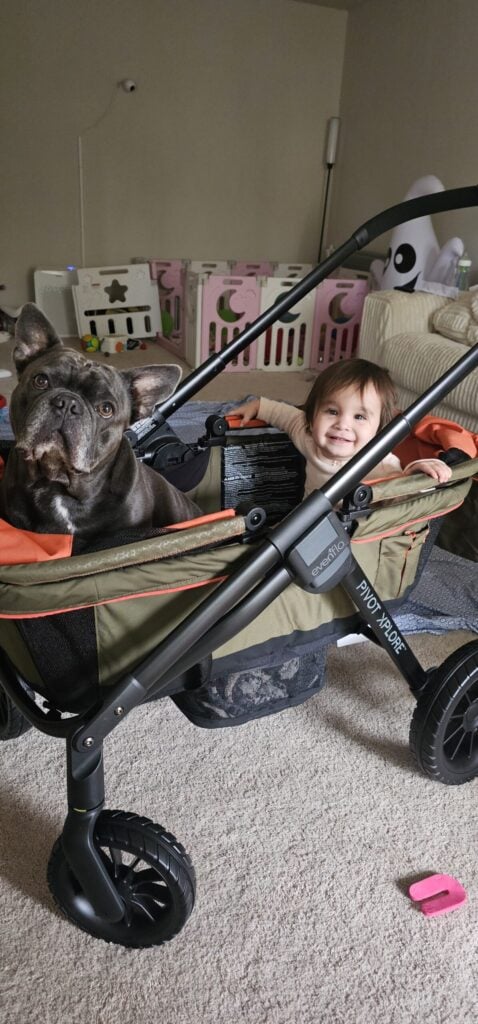Sensory overload is something many children experience, especially during tasks that require focus, like school work or therapy sessions. As parents and caregivers, it’s essential to understand how sensory overload can affect a child’s behavior and what strategies can help them regulate their emotions and succeed in their tasks.
In this article, we’ll walk through a common scenario where a child experiences sensory overload and share practical strategies for managing the situation.
What Happens During Sensory Overload?
Sensory overload occurs when a child’s brain struggles to process multiple sources of sensory input at once, such as sounds, visuals, or physical sensations. This can lead to dysregulated behaviors like:
- Expressing frustration or irritability
- Running away (elopement)
- Covering ears or eyes
- Appearing restless or anxious
- Unable or unwilling to complete a task
In these moments, the child may be completely unable to focus or complete a task.
The Occupational Therapy Scenario: Drawing Lines
In our scenario, we’re working on drawing lines to practice fine motor skills. You sit down with the child, and you say, “Hello, we’re going to draw lines today. First it’s my turn, see?” And you draw the line. Then you hand the paper and marker to the child and say, “Look, now it’s your turn. Let’s do it.”
But in this scenario, the child says no and runs away due to sensory overload. What can you do to handle this? Here’s what we would suggest:
Step 1: Adjust Your Approach
When a child is showing signs of sensory overload, the first thing to do is adjust your approach. Speaking softly and using short, clear sentences can help reduce the amount of auditory input the child has to process.
For example, instead of giving complex instructions like in our scenario above, try using simple cues like “lines” or “draw.”
Giving the child time to process the information is also important. Pausing between instructions allows them to absorb what you’re asking without feeling overwhelmed.
Step 2: Provide Sensory Breaks
If a child continues to struggle, offering a sensory break can help. Providing calming tools like an interesting toy or a comfortable blanket or cushion. This gives the child a chance to calm themselves down.
You don’t have to wait for the child to experience sensory overload to do this. If you notice the signs starting, you can always take a break to help prevent overload from happening.
Step 3: Create an Optimal Environment
The physical environment plays a big role in helping a child manage sensory overload. When working at a table, ensure that both feet are flat on the ground, the torso is upright, and the arms are laid on the table in parallel position. This is an important posture to use during handwriting skills or any other tabletop activities because it provides stability.
If a child is struggling with posture or sitting still, consider using sensory supports like a seat cushion. These tools help a child maintain focus and increase their attention on the task. You should also make sure that you’re at the same level as the child and model the tasks you want the child to do so that the child doesn’t feel like you’re above them giving commands.
Step 4: Use Warm-Up Activities
You want to get the child ready for the activity you’re going to do with them. If they don’t want to start with the activity right away, you can offer them something which is similar, like a warm up before that activity.
In our scenario, we were going to practice drawing lines. We can use an activity such as a magnetic maze pencil as a warmup because it also helps improve grip strength and motor skills. It allows the child to ease into the task without feeling pressured to perform immediately.
Step 5: Start Small for Success
When asking a child to complete a task, starting with small, achievable steps can lead to greater success. For example, instead of asking a child to draw ten lines, start with two or three. Celebrate those accomplishments to build their confidence, then gradually increase the difficulty.
As part of this, when a child is working on a task, don’t keep on correcting them or telling them they’re doing it wrong. Instead, you can model how it should be done and encourage them to copy you.
Step 6: Modify the Task
If a child struggles with handwriting due to weak core or shoulder muscles, consider modifying the activity. You can take a piece of paper and paste it on the wall or on the back of the door. You can even use a slant board while the child is laying down in a prone position on the floor.
This will provide enough sensory input to all the muscles and joints, as well as strengthen the core muscles and shoulder muscles which are utilized for handwriting skills.
Reach Out to JLD Therapy for More Support
Helping a child through sensory overload requires patience, understanding, and the right strategies. By adjusting your approach, providing sensory breaks, and creating an optimal environment, you can help the child feel more in control and capable of succeeding in their tasks.
If you have any questions or are interested in pediatric therapy for your child, give us a call today at (408) 337-2727 to get started.
About Poonam Menezes, OT
Poonam became an occupational therapist in 2006. She has a Masters in Occupational therapy from the State University of New York. Her clinical experience includes 16 years working with adults in skilled nursing, assisted living, and independent living facilities. She was the Director of Rehabilitation in CCRCs. She has experience in home health, outpatient setting, and being a special education aide in the school district.
Kavita Patel, OT
Kavita became a therapist in 2022. She earned her Bachelors of Science and Masters of Science in Occupational Therapy at San Jose State University. She has experience working with children from 2 to 10 years old with various diagnoses such as Autism Spectrum Disorder (mild, moderate, severe) and other developmental delays for 6+ years in clinics, schools, and home settings.





























































































































